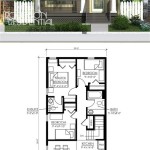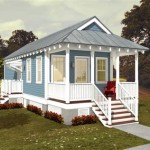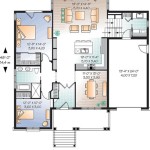A wren house is a small, enclosed structure designed to provide nesting and shelter for wrens, small songbirds known for their melodious chirping and energetic personalities. These houses are typically made of wood or other durable materials and feature a small entrance hole that allows wrens to enter and exit while protecting them from predators. Wren houses can be placed in gardens, parks, or other outdoor areas where wrens are known to frequent.
Building a wren house can be a fun and rewarding project for bird enthusiasts and nature lovers alike. By providing a safe and comfortable nesting place for wrens, you can help support these charming birds and contribute to the local ecosystem. In this article, we will explore the various plans and considerations involved in building a sturdy and attractive wren house.
When planning a wren house, there are several important points to consider:
- Size and Dimensions: Wren houses should be approximately 6x6x8 inches in size, with a 1.25-inch entrance hole.
- Entrance Hole: The entrance hole should be placed near the top of the house, centered or slightly off-center.
- Ventilation: Provide adequate ventilation by drilling small holes near the top of the house.
- Drainage: Ensure proper drainage by drilling a small hole in the bottom of the house.
- Materials: Use durable materials such as cedar, redwood, or pine for the house.
- Roof: The roof should overhang the entrance hole to provide protection from rain.
- Mounting: Choose a mounting location that is protected from predators and the elements.
- Predator Protection: Consider adding a predator guard to prevent larger animals from reaching the entrance hole.
- Cleaning: Wren houses should be cleaned annually to remove old nesting material and prevent disease.
- Multiple Houses: Providing multiple wren houses can increase the chances of attracting wrens.
By following these guidelines, you can create a safe and comfortable home for wrens that will help them thrive in your backyard habitat.
Size and Dimensions: Wren houses should be approximately 6x6x8 inches in size, with a 1.25-inch entrance hole.
The size and dimensions of a wren house are crucial for attracting and accommodating wrens. The ideal size for a wren house is approximately 6 inches wide, 6 inches deep, and 8 inches high. This provides enough space for wrens to build their nests and raise their young comfortably.
The entrance hole should be about 1.25 inches in diameter. This size allows wrens to enter and exit the house easily while preventing larger birds and predators from entering. The entrance hole should be placed near the top of the house, centered or slightly off-center. This helps to protect the nest from rain and wind.
Ensuring proper ventilation is also important. Drill small holes near the top of the house to allow for air circulation and prevent moisture build-up. Additionally, drill a small drainage hole in the bottom of the house to allow any water that enters to drain out.
To ensure the durability and longevity of the wren house, use weather-resistant materials such as cedar, redwood, or pine. These materials are naturally resistant to rot and decay, making them ideal for outdoor use. The roof of the house should overhang the entrance hole to provide additional protection from the elements.
By following these guidelines, you can create a wren house that is the perfect size and shape for attracting and supporting these delightful birds.
Entrance Hole: The entrance hole should be placed near the top of the house, centered or slightly off-center.
The placement of the entrance hole is crucial for the safety and well-being of wrens and their young. Placing the entrance hole near the top of the house provides several advantages:
- Protection from Predators: A higher entrance hole makes it more difficult for predators, such as cats and snakes, to reach the nest and harm the baby wrens.
- Reduced Exposure to Elements: Placing the entrance hole near the top of the house helps to protect the nest from rain, wind, and direct sunlight.
- Improved Drainage: A higher entrance hole allows for better drainage, preventing water from accumulating in the nest and potentially harming the eggs or chicks.
In addition to the height of the entrance hole, the position of the hole can also influence the safety and comfort of the wrens. Centering the entrance hole or placing it slightly off-center provides the following benefits:
- Equal Access: Centering the entrance hole allows wrens to enter and exit the house from any direction, providing equal access for both male and female wrens.
- Reduced Competition: Placing the entrance hole slightly off-center can help to reduce competition between wrens for access to the nest, especially if multiple wrens are nesting in the area.
By carefully considering the placement of the entrance hole, you can create a wren house that is safe, comfortable, and attractive to these charming birds.
Additional Tips:
- The entrance hole should be about 1.25 inches in diameter, which is large enough for wrens to enter and exit easily but small enough to prevent larger birds from entering.
- Ensure that the entrance hole is smooth and free of splinters or sharp edges that could injure the wrens.
- Consider adding a predator guard or baffle around the entrance hole to further deter predators.
Ventilation: Provide adequate ventilation by drilling small holes near the top of the house.
Proper ventilation is crucial for the health and well-being of wrens and their young. Inadequate ventilation can lead to a build-up of moisture and stale air inside the house, creating an unhealthy environment that can promote mold, mildew, and disease.
To ensure adequate ventilation, drill several small holes near the top of the wren house. These holes should be approximately 1/4 inch in diameter and should be placed evenly around the perimeter of the house. The holes should not be too large, as this could allow predators or the elements to enter the house.
Ventilation holes serve several important purposes:
- Air Circulation: The holes allow fresh air to circulate throughout the house, removing stale air and moisture.
- Temperature Regulation: Ventilation helps to regulate the temperature inside the house, preventing it from becoming too hot or too cold.
- Moisture Control: The holes allow moisture to escape, preventing condensation from building up inside the house.
By providing adequate ventilation, you can create a healthy and comfortable environment for wrens and their young.
Additional Tips:
- Avoid drilling holes in the bottom of the house, as this can allow water to enter during rain.
- Cover the ventilation holes with wire mesh or hardware cloth to prevent predators from entering.
- Clean the ventilation holes regularly to prevent them from becoming clogged with dust or debris.
Drainage: Ensure proper drainage by drilling a small hole in the bottom of the house.
Proper drainage is crucial for the health and longevity of a wren house. Without adequate drainage, moisture can accumulate inside the house, leading to mold, mildew, and rot. This can create an unhealthy environment for wrens and their young, and can also damage the house itself.
To ensure proper drainage, drill a small hole in the bottom of the wren house. This hole should be approximately 1/4 inch in diameter and should be placed in the center of the bottom of the house. The hole should be angled slightly downward to allow water to drain out easily.
The drainage hole serves several important purposes:
- Prevents Water Accumulation: The hole allows water to drain out of the house, preventing it from accumulating and causing damage.
- Reduces Moisture: By allowing water to drain out, the hole helps to reduce the overall moisture level inside the house, creating a healthier environment for wrens.
- Prevents Mold and Mildew: Reduced moisture levels help to prevent the growth of mold and mildew, which can be harmful to wrens and can also damage the house.
By ensuring proper drainage, you can help to create a healthy and long-lasting home for wrens.
Additional Tips:
- Avoid drilling the drainage hole too large, as this could weaken the structure of the house.
- Cover the drainage hole with wire mesh or hardware cloth to prevent predators from entering.
- Clean the drainage hole regularly to prevent it from becoming clogged with debris.
Materials: Use durable materials such as cedar, redwood, or pine for the house.
The choice of materials for your wren house is crucial for its durability, longevity, and ability to withstand the elements. Selecting durable materials will ensure that your wren house provides a safe and comfortable home for wrens for many years to come.
Cedar, redwood, and pine are all excellent choices for wren house construction due to their natural resistance to rot, decay, and insects. These woods are naturally weather-resistant, meaning they can withstand exposure to rain, sun, and wind without deteriorating quickly.
Cedar is a particularly popular choice for wren houses because of its exceptional resistance to rot and decay. It is also known for its beautiful reddish-brown color and pleasant aroma. Redwood is another durable option that is known for its strength and resistance to termites. Pine is a more affordable option that is also relatively durable and easy to work with.
When selecting the wood for your wren house, choose boards that are free of knots, cracks, or other imperfections. These imperfections can weaken the structure of the house and make it more susceptible to damage. Also, ensure that the wood is dry and well-seasoned to prevent warping or splitting.
By using durable materials and following proper construction techniques, you can create a sturdy and long-lasting wren house that will provide a safe and comfortable home for wrens for many years to come.
Additional Tips:
- If you are using untreated wood, consider applying a weather-resistant sealant to the exterior of the house to further protect it from the elements.
- Avoid using pressure-treated wood for wren houses, as the chemicals used in the treatment can be harmful to wrens.
- If you are using plywood or other composite materials, ensure that they are rated for exterior use and are resistant to moisture and rot.
Roof: The roof should overhang the entrance hole to provide protection from rain.
The roof of a wren house plays a crucial role in protecting the nest and its inhabitants from the elements. A well-designed roof will keep the nest dry and sheltered, even during heavy rain.
- Overhang: The roof should overhang the entrance hole by at least 1 inch on all sides. This overhang creates a protective barrier that prevents rain from entering the house through the entrance hole.
- Slope: The roof should have a slight slope to encourage water runoff. This prevents water from pooling on the roof and seeping into the house.
- Extended Edges: Consider extending the edges of the roof beyond the walls of the house. This provides additional protection from wind-driven rain and helps to keep the interior of the house dry.
- Roof Material: Choose a roofing material that is weather-resistant and durable. Asphalt shingles, metal roofing, or cedar shakes are all good options.
By following these guidelines, you can create a wren house with a sturdy and protective roof that will keep the nest dry and comfortable, even during inclement weather.
Mounting: Choose a mounting location that is protected from predators and the elements.
Choosing the right mounting location for your wren house is crucial for the safety and well-being of its feathered occupants. Here are some key factors to consider when selecting a mounting location:
- Protection from Predators: Place the wren house in a location that is not easily accessible to predators such as cats, snakes, and squirrels. Avoid mounting the house near low branches or dense vegetation that could provide cover for predators.
- Protection from the Elements: Choose a location that is sheltered from strong winds, rain, and direct sunlight. Avoid mounting the house in exposed areas or on the south side of buildings or trees, as these areas can experience extreme heat and sun exposure.
- Height: Mount the wren house at a height of 5-10 feet above the ground. This height provides a good balance of protection from predators and accessibility for wrens.
- Clearance: Ensure that there is at least 3 feet of clearance around the wren house on all sides. This clearance allows wrens to easily enter and exit the house and helps to prevent predators from reaching the entrance hole.
By selecting a mounting location that meets these criteria, you can create a safe and comfortable nesting environment for wrens and increase the chances of successful nesting and fledging.
Predator Protection: Consider adding a predator guard to prevent larger animals from reaching the entrance hole.
Protecting wrens and their young from predators is a crucial aspect of providing a safe nesting environment. One effective way to enhance predator protection is by adding a predator guard to the entrance hole of the wren house.
- Purpose of a Predator Guard: A predator guard is a physical barrier that surrounds the entrance hole, making it more difficult for larger animals such as cats, snakes, and raccoons to reach and harm the wrens inside.
- Types of Predator Guards: There are various types of predator guards available, including metal cages, plastic domes, and baffle-style guards. Choose a guard that is sturdy and durable, and select the appropriate size for the entrance hole of your wren house.
- Installation: Predator guards are typically easy to install. Simply attach the guard around the entrance hole, ensuring that it is securely fastened and does not obstruct the wrens’ access.
- Effectiveness: Predator guards have proven to be effective in deterring predators and protecting nesting wrens. By adding a predator guard, you can significantly increase the safety and success rate of your wren house.
In addition to predator guards, other measures to enhance predator protection include mounting the wren house at a suitable height, choosing a location with minimal predator activity, and regularly monitoring the surroundings for potential threats.
Cleaning: Wren houses should be cleaned annually to remove old nesting material and prevent disease.
Regular cleaning of wren houses is essential for maintaining a healthy and hygienic nesting environment for wrens. Over time, old nesting material can accumulate, creating a breeding ground for parasites, bacteria, and mold. Proper cleaning helps to prevent the spread of diseases and ensures the well-being of future nesting wrens.
The best time to clean a wren house is during the fall or winter when wrens are not nesting. Follow these steps for effective cleaning:
- Remove the old nesting material: Carefully remove all old nesting material from the house, including twigs, leaves, feathers, and any other debris. Dispose of the old material properly to prevent the spread of parasites or diseases.
- Inspect the house for damage: While cleaning, inspect the wren house thoroughly for any signs of damage, such as cracks, holes, or loose joints. Repair any damage promptly to ensure the structural integrity of the house and prevent drafts or water leakage.
- Clean the interior: Use a mild soap solution and a soft brush to gently clean the interior surfaces of the house. Rinse the house thoroughly with clean water and allow it to dry completely before putting it back up.
- Disinfect the house: To prevent the spread of diseases, disinfect the house using a diluted bleach solution (1 part bleach to 10 parts water). Apply the solution to the interior surfaces of the house and allow it to sit for 10-15 minutes before rinsing thoroughly with clean water.
Once the wren house is clean and dry, it is ready to be put back up in a suitable location for the next nesting season. Regular cleaning and maintenance will help to extend the lifespan of your wren house and provide a safe and healthy nesting environment for wrens for many years to come.
Multiple Houses: Providing multiple wren houses can increase the chances of attracting wrens.
Providing multiple wren houses in your yard can significantly increase the chances of attracting these delightful birds and encouraging them to nest on your property. Here’s why having multiple houses is beneficial:
- Increased Competition: Multiple wren houses create a sense of competition among wrens, making them more likely to choose your yard as their nesting site. When wrens have multiple options, they tend to select the most suitable house based on factors such as location, size, and protection from predators.
- Higher Occupancy Rates: With multiple houses available, there is a higher probability that at least one house will meet the specific preferences of a pair of wrens. This increases the chances of successful nesting and fledging, as wrens are more likely to occupy and raise their young in a house that aligns with their needs.
- Improved Chances of Second Broods: If a pair of wrens successfully raises a brood in one of your houses, they may be more inclined to stay in your yard and attempt a second brood in a different house. Providing multiple houses gives them the option to choose a new nesting site nearby, increasing the overall productivity of your wren population.
- Accommodation for Multiple Pairs: Multiple wren houses allow you to accommodate more than one pair of wrens simultaneously. This is particularly beneficial if you have a large yard or property that can support multiple wren families. By providing ample nesting sites, you can create a wren-friendly environment and encourage a thriving wren population.
When placing multiple wren houses, ensure they are spaced at least 10-15 feet apart to minimize competition and provide each pair of wrens with a sense of privacy and territory.










Related Posts








